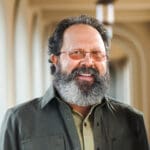Saying Your Prayers Versus Praying Your Prayers
In the spiritual life, the language we use intimately reflects our hearts. As an example, let’s look at prayer. Do we “say our prayers?” Or do we pray in an intimate relationship with God? The former is like saying, “I said words to my wife.” The latter is closer to saying, “My wife and I had a wonderful dinner together.” Prayer, when spoken of in impersonal terms, candepict and encourage impersonal aspirations, which can then lead to impersonal attempts at prayer. And impersonal prayer is not prayer at all, because it only amounts to a person saying things, rather than any real encounter with God. Here’s what St. Teresa of Avila had to say about “saying” prayers:
I speak of mental as well as vocal: being prayer, it should be made with attention; for she who does not consider with whom she speaks, and what she asks, and who she is that asks, and of whom she asks, knows little of prayer, however much her lips may move. And though sometimes prayer is made when there is no actual advertence, yet this attention is requisite at other times. But whoever shall accustom himself to speak with the majesty of God, as he would talk with his slave, without considering whether he speaks properly or no, but who speaks only what comes first into his head, or what he may have learnt by heart by having repeated it at other times, – this I do not consider to be prayer.
I recently watched a YouTube video on the topic of prayer – specifically Lectio Divina – by a popular, but currently dissident, priest (I say “currently” because there is always hope). Whenever I hear anyone speak of Lectio Divina, in particular, but also other methods of prayer, I listen carefully to quickly ascertain whether or not I should eagerly lean in or instead find something better to do. What I listen for is simple: whether their discourse is a focus on the method or on the relationship assisted by the method. Are they merely emphasizing techniques and “steps” – or are they helping me to understand how to deepen my relationship with God? This priest in the video – with a heart that appears right now to be disconnected from the vine – spoke only in mechanical/technical terms rather than in a language that reflected any real intimacy with the Lord. It was clear that this was not the place to seek deeper insight into to true spirit of Lectio Divina, or any other form of prayer.
It’s a lesson for all of us. When we are speaking of prayer, if we ourselves are prone to impersonal expressions, might that indicate a challenge that we need to address in our own faith lives? Might it reflect that our relationship with the Lord is also impersonal and thus maybe less than a living relationship? Sure, we may know our method, “say” our prayers, and show up faithfully (these are good things). But we may have a long way to go to be living the prayer life of which the mystics speak. And we are certainly distant from Jesus’ message in John 14, where he says, “If you abide in me, if you abide in my love, I will abide in you … and I will manifest myself to you.”
Jesus is not simply an idea, an ethereal principle, a distant God for whom we must act in particular ways to please and appease. He’s not the God that requires a rain dance with a special kind of jig, clothing, and rhythm. He’s not the false god of Baal that requires fervency through empty acts of distorted piety – any manner of external action that is in essence only the performing of a task or a duty exercised in exchange for favors from God: “I just said these words. Here’s my magic formula. Now, please do what I ask.” This is not prayer.
In stark contrast, prayer in the minds and hearts of the mystics is spoken of as analagous to spousal intimacy – the engaging of another on a level that is only reflected effectively or as completely as it can be in the analogy of spousal love. Of course I’m not speaking here of the mere act of sex, but of what Blessed John Paul II called the highest expression of self. In that conjugal act, in that communion, that oneness, that mutual self giving, we find a vulnerability and intimacy, a joy that rivals any other analogy that we can use to understand really what it means to have and live out a relationship with God.
I pray that you do “say” your prayers, but that they become far more than simply thoughts you put into words. I pray that, through your prayer life, you would come to really know the Lord, not as someone you merely speak to, but as someone you love … and who loves you, specifically, personally, truly, always.
+
Art for this post on saying your prayers versus praying your prayers: Homme en prière (Man praying [Man in Prayer]), Pierre-Louis Delaval, 1826, PD-US author’s life plus 100 years or less, Wikimedia Commons.





